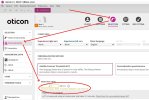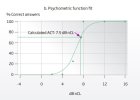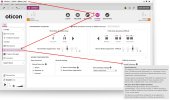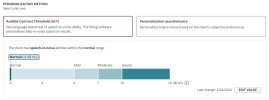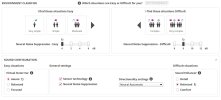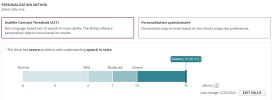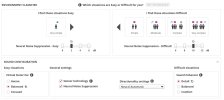I agree that we don't really know for sure if it's really a new platform or just a rename attempt. But I, on the other hand, and in the camp that find it believable that it would be a new platform, because
1. I find Oticon to be more open about the technical details they reveal from their whitepapers. I would give them the benefit of the doubt that they wouldn't lie about having a brand new platform to support the Intent, because that would be a pretty big lie that would be unnecessary just for the sake of marketing deception.
2. The addition of the accelerometer feature. Sure, if they had the foresight to add all the extra real estate for the DNN 2.0, including the accelerometer in the Polaris platform for future use (on the Intent), but never activated it before until now, then I could care less if it's the same Polaris hardware but now renamed to reflect the new features, as long as the new features in the Intent result in measurably better results. And Oticon almost always come out with whitepaper to demonstrated how the new features in each of their generation of aid model give measurably better results than the previous generation.
3. Even if they decided to switch to a size 13 rechargeable setup so they can have more energy, it's another reason that may require a new platform design to facilitate this switch.
But I do find it odd that they haven't released any technical paper on the Sirius platform yet, like they did with the Velox and Polaris platform. But then it's still pretty early in the game as they've only just announced the Intent recently. The paper may get released in due time.
1. I find Oticon to be more open about the technical details they reveal from their whitepapers. I would give them the benefit of the doubt that they wouldn't lie about having a brand new platform to support the Intent, because that would be a pretty big lie that would be unnecessary just for the sake of marketing deception.
2. The addition of the accelerometer feature. Sure, if they had the foresight to add all the extra real estate for the DNN 2.0, including the accelerometer in the Polaris platform for future use (on the Intent), but never activated it before until now, then I could care less if it's the same Polaris hardware but now renamed to reflect the new features, as long as the new features in the Intent result in measurably better results. And Oticon almost always come out with whitepaper to demonstrated how the new features in each of their generation of aid model give measurably better results than the previous generation.
3. Even if they decided to switch to a size 13 rechargeable setup so they can have more energy, it's another reason that may require a new platform design to facilitate this switch.
But I do find it odd that they haven't released any technical paper on the Sirius platform yet, like they did with the Velox and Polaris platform. But then it's still pretty early in the game as they've only just announced the Intent recently. The paper may get released in due time.
Last edited:


